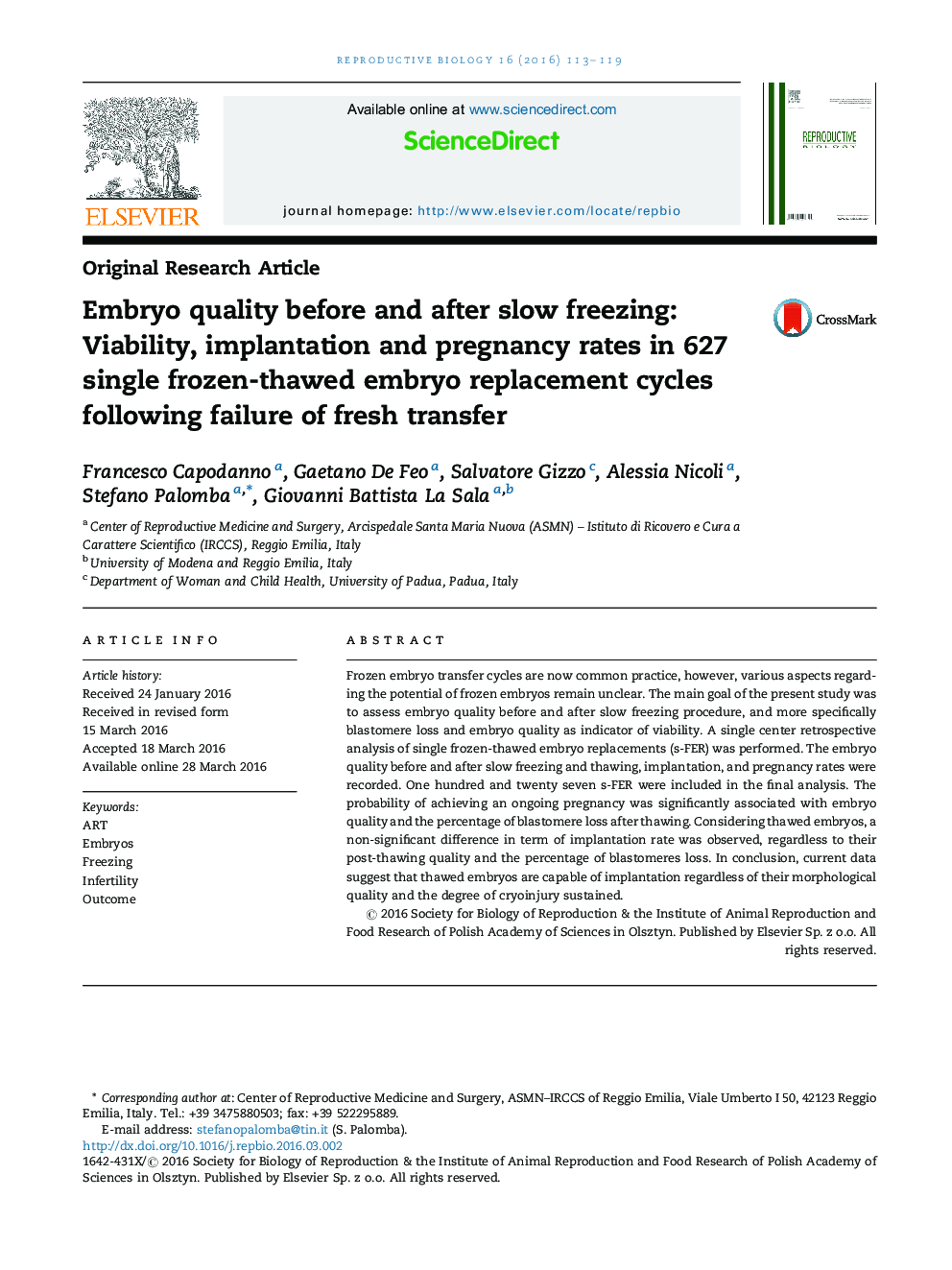| Article ID | Journal | Published Year | Pages | File Type |
|---|---|---|---|---|
| 2062332 | Reproductive Biology | 2016 | 7 Pages |
Frozen embryo transfer cycles are now common practice, however, various aspects regarding the potential of frozen embryos remain unclear. The main goal of the present study was to assess embryo quality before and after slow freezing procedure, and more specifically blastomere loss and embryo quality as indicator of viability. A single center retrospective analysis of single frozen-thawed embryo replacements (s-FER) was performed. The embryo quality before and after slow freezing and thawing, implantation, and pregnancy rates were recorded. One hundred and twenty seven s-FER were included in the final analysis. The probability of achieving an ongoing pregnancy was significantly associated with embryo quality and the percentage of blastomere loss after thawing. Considering thawed embryos, a non-significant difference in term of implantation rate was observed, regardless to their post-thawing quality and the percentage of blastomeres loss. In conclusion, current data suggest that thawed embryos are capable of implantation regardless of their morphological quality and the degree of cryoinjury sustained.
